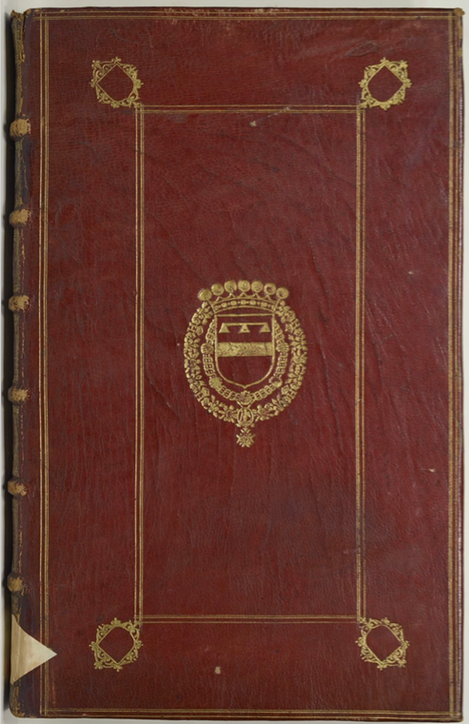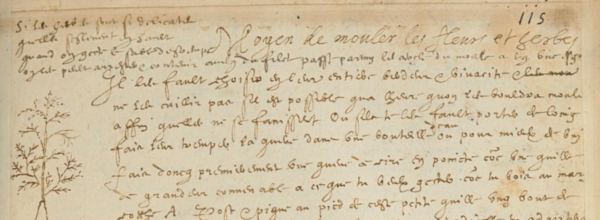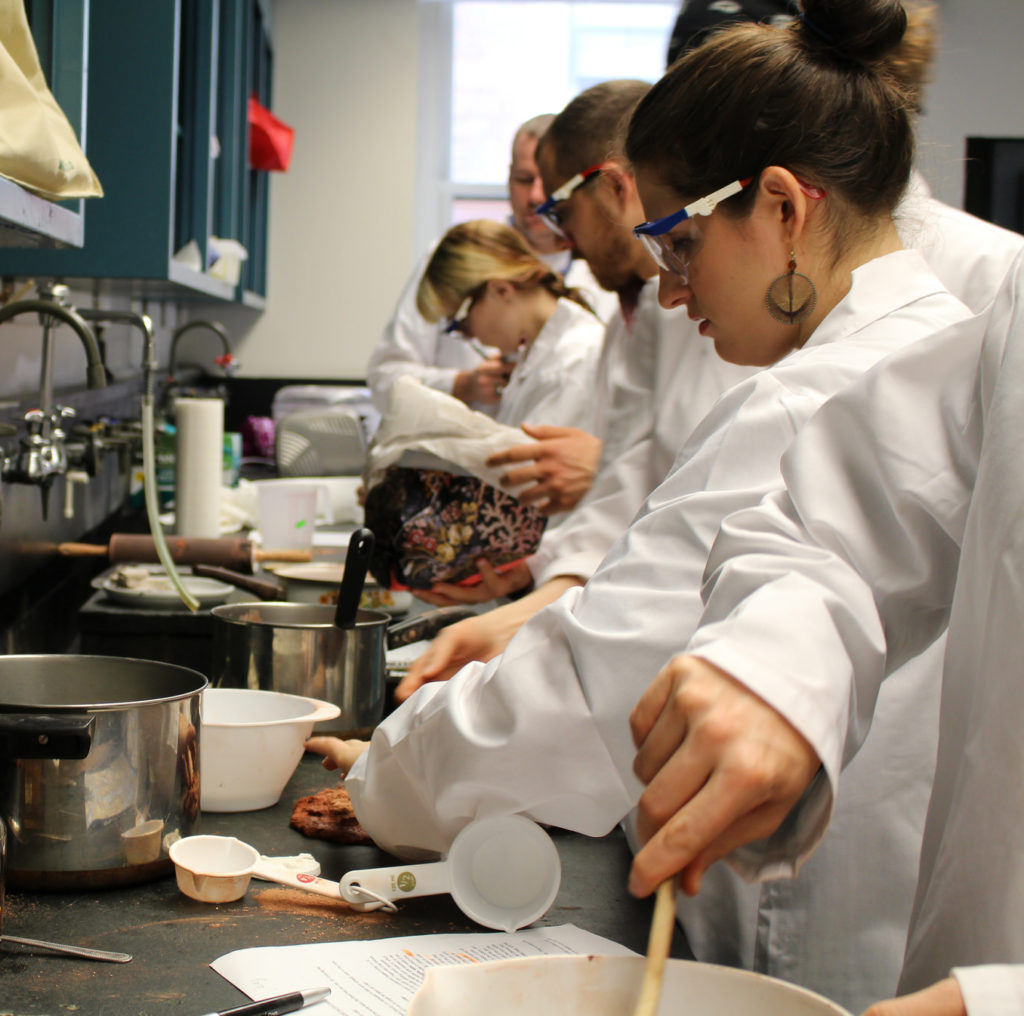Overview
Secrets of Craft and Nature in Renaissance France. A Digital Critical Edition and English Translation of BnF Ms. Fr. 640. is openly accessible at edition640.makingandknowing.org.
The Research and Teaching Companion is openly accessible at teaching640.makingandknowing.org.
The Making and Knowing Project is a research and pedagogical initiative in the Center for Science and Society at Columbia University that explores the intersections between artistic making and scientific knowing. Today these realms are regarded as separate, yet in the earliest phases of the Scientific Revolution, nature was investigated primarily by skilled artisans by means of continuous and methodical experimentation in the making of objects – the time when “making” was “knowing.”
Drawing on techniques from both laboratory and archival research, the Making and Knowing Project crosses the science/humanities divide and explores the relationships between today’s labs and the craft workshops of the past, and between pre-industrial conceptions of natural knowledge and our understanding of science and art today.
From 2014 through 2020, the Project’s focus was the creation of a digital critical edition of an intriguing anonymous sixteenth-century French artisanal and technical manuscript, BnF Ms. Fr. 640. Through the Project’s transcription, English translation, and encoding of the text, the edition presents the text of Fr. 640 in a searchable digital format in both French and English translation for the first time. The critical apparatus (including multimedia annotations, essay-length analyses of techniques and materials, a glossary of technical terms, and a list of resources for further exploration) situates the manuscript’s contents within the material and historical context in which they were produced. The Project hopes to engage readers, whether researchers, students, or the broader public, in a new approach to exploring historical texts, one which emphasizes the importance of the material conditions, interpretations, and outcomes that emerge when the written word is realized through investigations into matter. The manuscript codifies procedures that were not meant to be reproduced solely through the act of reading but were rather an invitation to imitate and experiment. The edition, in turn, through its innovative critical commentary and accompanying videos and visual resources, invite its audience not only to read and analyze the text but also to explore and investigate the materials and processes detailed within it.
The Manuscript, BnF Ms. Fr. 640
This unique manuscript testifies to the widespread interest in processes of making art, as well as to the constant experimentation with natural materials undertaken in early modern workshops. Incorporated first into the library of the Dukes de Béthune in the sixteenth century and then into the Royal library in 1662, this large, 170-folio manuscript resides in the Bibliothèque nationale in Paris as Ms. Fr. 640, where it has been digitized on Gallica.
The output of the Making and Knowing Project is an open-access digital critical edition and English translation of this intriguing text.
The creation of the digital edition through the Project’s collaborative, interdisciplinary pedagogy-driven methodologies consists of four interrelated and iterative components:
Paleography, Translation, and Encoding Training Workshops
The digital edition is only one dimension of this project, however, for the process by which this critical edition was produced is as important as its product. First, yearly Text Workshops under the co-direction of Lead Paleographer Marc Smith (École nationale des chartes) were held every summer. Advanced graduate students from around the world gain paleographic skills in middle French as well as an understanding of TEI markup as they collaborate on a digital transcription and translation of the manuscript.
Practice your own paleographic skills on the Letterforms page so that you can read BnF Ms.Fr. 640 as well.
Laboratory Seminars
Research for the edition forms an experiment in both pedagogy and humanistic research. It involves Laboratory Seminars in which students work alongside academic and museum-based historians of art and historians of science, and in collaboration with experienced makers, to reconstruct the technical recipes contained in the manuscript. Their findings are used to understand and annotate the digital edition, and their experiences are fostering the sharing of expertise across disciplines as well as the engagement on the part of students with the material culture of the past.
The process of interpreting a technical manuscript offers special challenges. The meaning of terms for materials, and sequence and process of techniques often cannot be determined simply by literally translating the words of the manuscript. This is especially true of Ms. Fr. 640 in which it is clear that the original author faced many challenges, first as he translated his own making and doing into words—by no means an easy process, as the looping and circuitous descriptions in Ms. Fr. 640 give ample evidence—then made a fair copy of those recipes and instructions, and finally, carried out many processes (indicated by the extensive marginal notations describing further experimentation in the manuscript). Understanding such a detailed and complex technical manual requires trying and testing—reconstructing—the instructions contained in the manuscript.
Working Groups
Each year we focus on a particular theme in the manuscript and organize groups of scholars, makers, and museum professionals into a Working Group. The themes for our working groups have included Moldmaking and Metalworking (2014-2015); Colormaking (2015-2016); and Practical Knowledge: Vernacular Natural History, Practical Perspective, Optics, Mechanics, and Medicine (2016-2017), Ephemeral Art (2017-2018), and Printmaking, Inscriptions, Impressions (2018-2019). We bring together these scholars and practitioners with the Lab seminar students each year at Columbia University in a Working Group Meeting, during which they provide oversight and input on every aspect of the project.
Click here for more on our Working Groups.
Digital Development
The proposed digital edition of Ms. Fr. 640 forms the center of an experiment in collaboration and pedagogy that explores the value of hands-on experience as a form of research and learning, not just for makers, art conservators, and artists, but also, uniquely, for students of the humanities. Historians, paleographers, makers, art and technical experts, and conservation and materials scientists are teaching and learning together as they collaborate on researching the manuscript.
Experimental and Collaborative Pedagogy
Through each cycle from Text Workshops through Lab Seminars to Working Group Meetings to Digital Seminar and prototyping, new insights are gained, accumulating information and generating questions for the next phase in the cycle. The interpretation of the manuscript evolves continually in light of the material reconstructions of the Lab Seminar and knowledge exchange of the Working Group Meetings. This iterative approach is key to the design and methodologies of the Making and Knowing Project.
The Project’s research has thus brought together a network of over 350 collaborators: students, practitioners (such as sculptors and painters), scholars of the humanities and social sciences (history, art history, anthropology, and museum scholars), natural scientists (chemists and conservation scientists), and specialists from the digital humanities and computer science (data scientists and librarians).
The Project’s collaborative approach, combining document-, object- and laboratory-based research with digital humanities tools, constitutes an innovation in methodology that challenges the separation of pedagogy from original research, the division between the sciences and humanistic inquiry, and leads to methodological consideration of historical evidence and authenticity on the one hand, and, on the other, indicates the important strengths of large-scale collaborative research in history and the humanities.
Activities take place primarily at Columbia University as a part of the Center for Science and Society.
Click the video or the links below to learn more.










